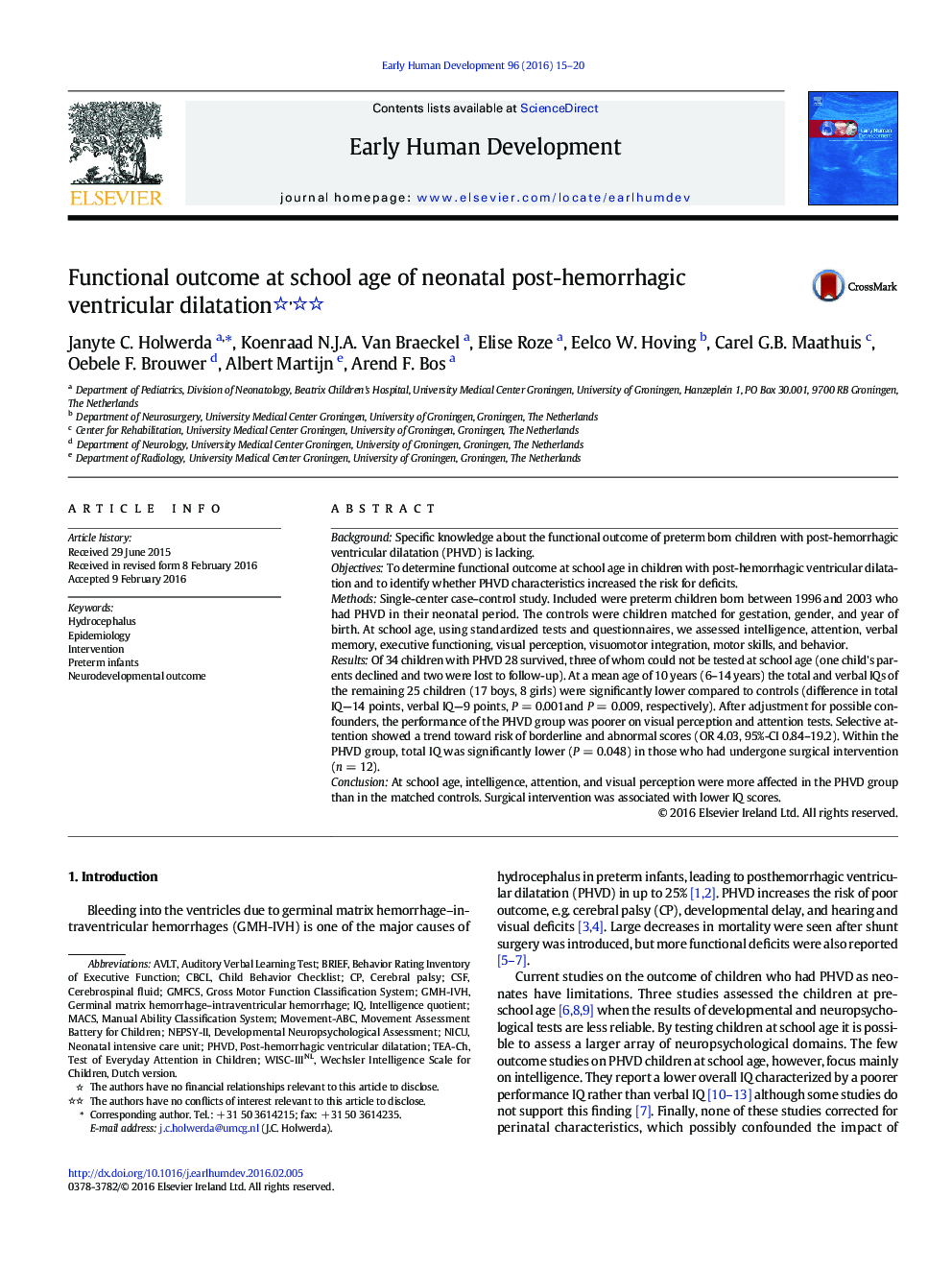| Article ID | Journal | Published Year | Pages | File Type |
|---|---|---|---|---|
| 3916449 | Early Human Development | 2016 | 6 Pages |
•Children with post-hemorrhagic ventricular dilatation had more problems in various cognitive domains such as intelligence, visual perception, and attention.•Measures reflecting functional outcomes such as visuomotor integration, executive functioning, motor skills, and behavioral problems did not differ.•In this small cohort, the requirement of surgical intervention was associated with poorer total intelligence measures.
BackgroundSpecific knowledge about the functional outcome of preterm born children with post-hemorrhagic ventricular dilatation (PHVD) is lacking.ObjectivesTo determine functional outcome at school age in children with post-hemorrhagic ventricular dilatation and to identify whether PHVD characteristics increased the risk for deficits.MethodsSingle-center case–control study. Included were preterm children born between 1996 and 2003 who had PHVD in their neonatal period. The controls were children matched for gestation, gender, and year of birth. At school age, using standardized tests and questionnaires, we assessed intelligence, attention, verbal memory, executive functioning, visual perception, visuomotor integration, motor skills, and behavior.ResultsOf 34 children with PHVD 28 survived, three of whom could not be tested at school age (one child's parents declined and two were lost to follow-up). At a mean age of 10 years (6–14 years) the total and verbal IQs of the remaining 25 children (17 boys, 8 girls) were significantly lower compared to controls (difference in total IQ—14 points, verbal IQ—9 points, P = 0.001and P = 0.009, respectively). After adjustment for possible confounders, the performance of the PHVD group was poorer on visual perception and attention tests. Selective attention showed a trend toward risk of borderline and abnormal scores (OR 4.03, 95%-CI 0.84–19.2). Within the PHVD group, total IQ was significantly lower (P = 0.048) in those who had undergone surgical intervention (n = 12).ConclusionAt school age, intelligence, attention, and visual perception were more affected in the PHVD group than in the matched controls. Surgical intervention was associated with lower IQ scores.
